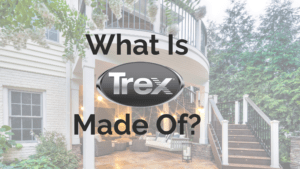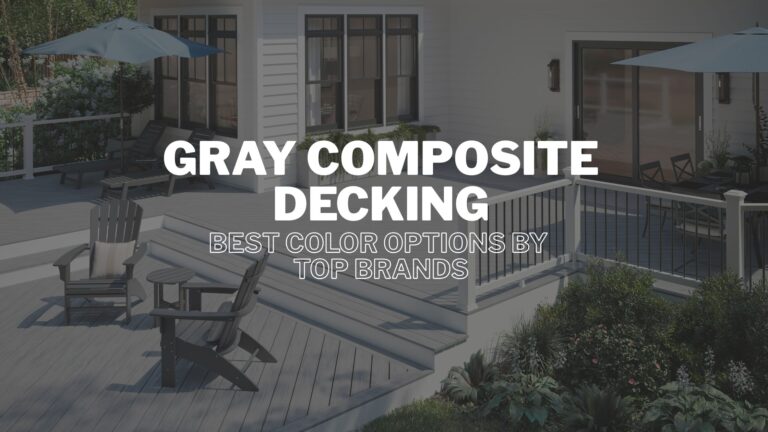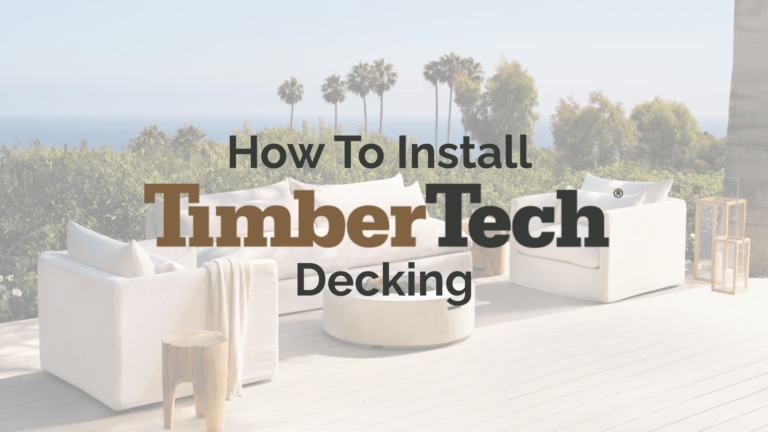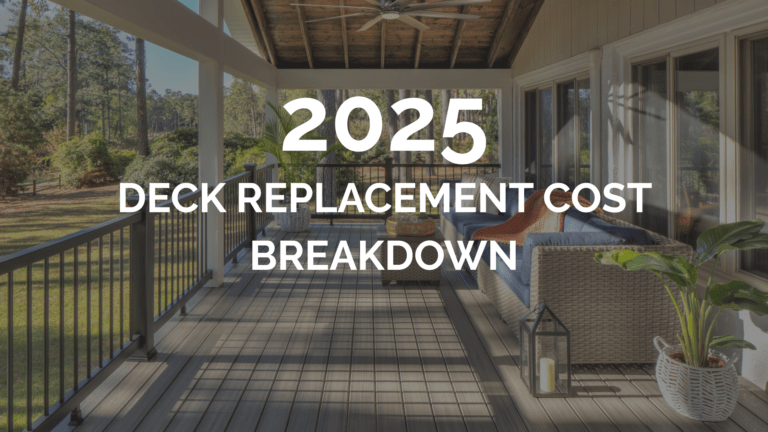Trex has become one of the most talked-about names in decking, and for good reason. Homeowners and contractors alike are asking: what is Trex made of, and why does it last so long? These are smart questions – especially for anyone comparing Trex to traditional wood or other composite options. Before investing in a new deck, it helps to understand what Trex is, what sets it apart, and whether the material truly delivers long-term value.
This guide breaks down what Trex is made of, how it performs outdoors, and what it might cost for your specific project.
What Is Trex and Why Is It So Popular?
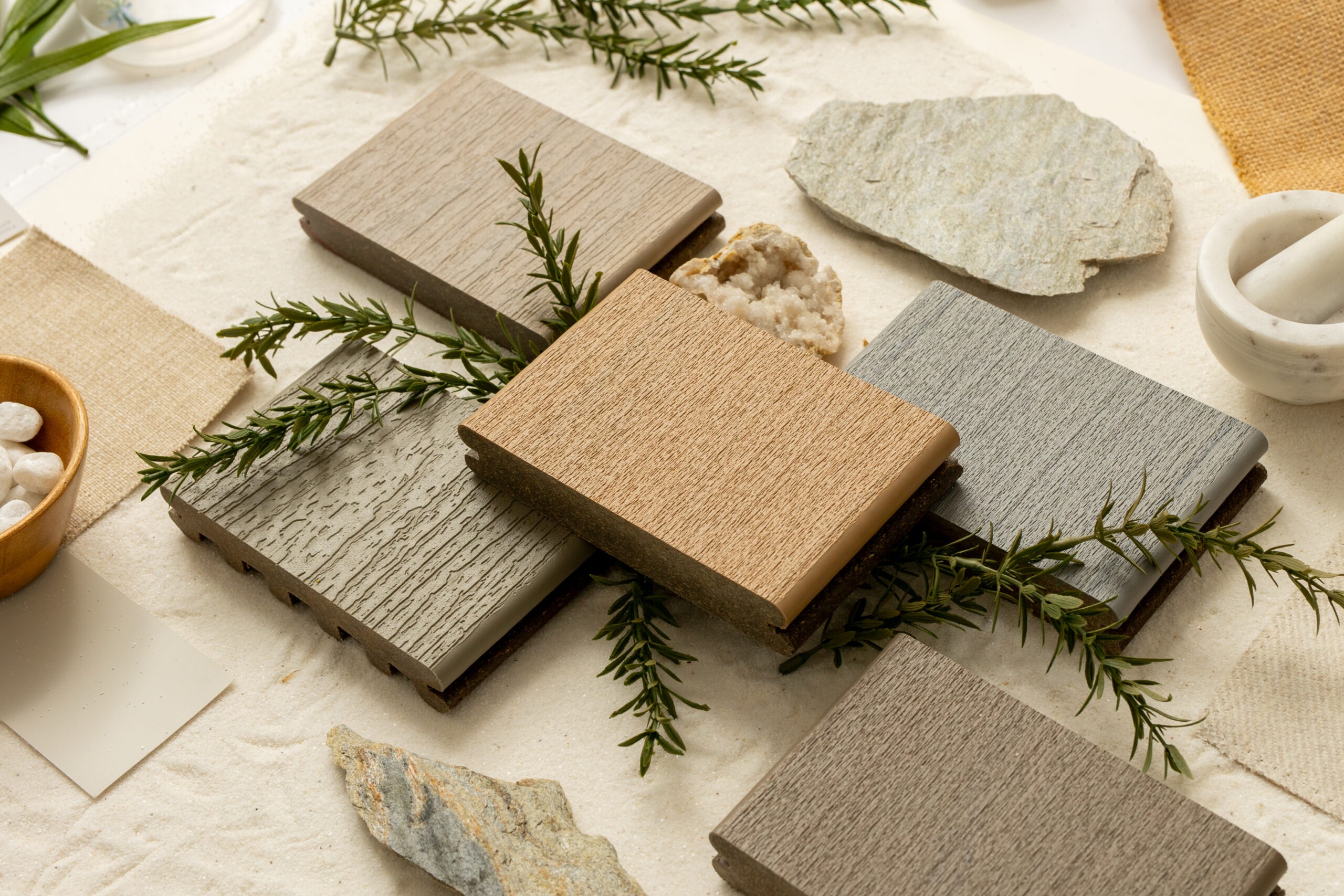

Trex is a leading manufacturer of composite decking products made for modern outdoor living spaces. As a brand, it first gained attention for replacing traditional wood boards with a material that offers better durability and lower maintenance. What is Trex? At its core, it is a decking solution designed to resist common problems like rotting, warping, and splintering.
What is Trex decking used for? Homeowners across the country install it to create strong, long-lasting decks that require little upkeep over time. A Trex product is built to perform through every season, offering better value than most wood options. Its growing popularity comes from how well it balances strength, appearance, and environmental responsibility in a single material.
What Is Trex Made Of?
What is Trex made of? The boards consist of 95% recycled content, made from a blend of reclaimed wood and recycled plastic film. Roughly half of that mix comes from industrial wood scraps like sawdust and shavings. The other half is polyethylene film, collected from items such as grocery bags, newspaper sleeves, case overwrap, and similar materials.
What is Trex decking made of beyond the core? Each board is protected by a high-performance outer shell, which wraps around three sides. This layer guards against fading, staining, and water damage, while giving the surface a smooth, natural wood appearance without the hassle of ongoing treatment.
Understanding what Trex decking is made of highlights why the product performs so well. The use of recyclable materials makes this composite material an environmentally responsible choice. Its structure resists common damage found in wood, such as warping or rotting, while maintaining a clean look with less upkeep. Compared to traditional lumber, it holds up longer, looks better, and does not require sanding, sealing, or staining.
Trex Deck Boards: Options for Every Project
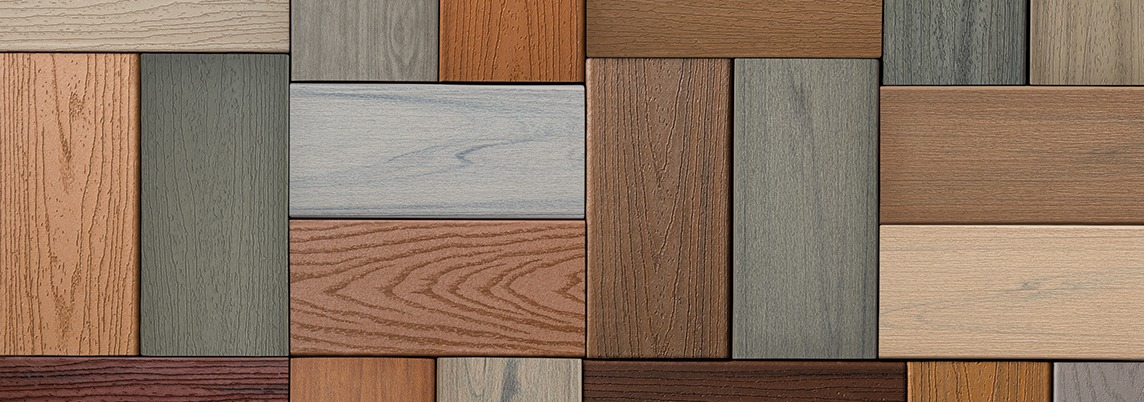

Several types of Trex deck boards exist, each designed to match different budgets, styles, and outdoor space needs. The five main collections are: Trex Signature, Trex Transcend Lineage, Trex Transcend, Trex Select, and Trex Enhance.
Signature is the newest line, offering the most advanced surface technology and sleek finish. Transcend Lineage provides a lighter, cooler board for hot climates, while the original Transcend line delivers bold color and grain detail. Select gives a classic look with dependable performance, and Enhance offers budget-friendly composite deck boards with less weight and quicker installation.
Whether you want premium design or an affordable upgrade from wood, deck boards Trex offers cover every scenario. Each board uses the same durable core and protective shell, helping you build a low-maintenance surface that fits your lifestyle. These decking options make it easier to match performance with your personal style.
Is Trex Durable?
Many homeowners ask if composite decking can truly stand up to years of use. The answer lies in how the boards are made and how they perform over time. This material resists moisture, fading and staining, and surface wear better than most natural options.
Each board features a dense core topped with a high-performance cap that protects against weather damage and foot traffic. Whether exposed to sun, rain, or snow, it holds up with minimal change in appearance. That strength also comes with little maintenance – no sanding, staining, or sealing needed.
Compared to wood, composite decking offers superior durability. It does not crack or splinter, and it keeps its shape without warping. This long-lasting performance helps homeowners get more value from their build while enjoying a clean, finished look for years to come.
Is Trex Eco-Friendly?
What is Trex decking made for, beyond durability? Sustainability plays a major role. Each board contains 95% recycled content, including reclaimed wood and recovered plastic. By turning landfill-bound materials into long-lasting products, this line of composite decking materials reduces waste without sacrificing strength.
Unlike natural wood, which often comes from harvested trees, this alternative gives new purpose to discarded materials. Choosing Trex composite decking boards supports eco-conscious building without the need for ongoing chemical treatments. For homeowners looking to reduce environmental impact, the composition and sourcing behind these boards offer a responsible solution that still performs at a high level.
Trex Decking Cost: What to Expect
Trex decking cost depends on the product line, size of the deck, and selected features. Signature and Transcend Lineage fall on the premium side, while Enhance offers a more budget-conscious option. Whether the project is DIY or professionally installed, the material delivers long-term value with minimal upkeep required.
Add-ons like matching deck railings can affect total cost, but they also elevate both safety and appearance. For homeowners ready to explore pricing, our Trex Decking Calculator provides a fast estimate based on dimensions and product selection. This tool makes it easy to compare options before making a commitment.
Trex Decking FAQs: Answers to the Most Common Questions
Still deciding if composite decking is right for your project? These frequently asked questions cover performance, cost, installation, and long-term value – so you can plan with confidence.
Yes, they can be curved when using a process called board bending, which involves heating the material and shaping it around a form. This allows for custom layouts with rounded edges, flowing stairs, or creative borders. However, this type of installation should be handled by professionals with the proper tools and training to avoid damaging the boards.
Yes, like most surfaces, composite boards can get warm under direct sunlight – especially in darker shades. Lighter-colored boards from collections like Lineage retain less heat and offer a cooler surface. To improve comfort, many homeowners also add shade structures or choose barefoot-friendly designs during the planning phase.
Absolutely. The composite core resists water absorption, which helps prevent rot, swelling, and mold growth over time. The outer shell also blocks moisture and debris from penetrating the surface, making it ideal for wet climates. Unlike wood, this material won’t splinter or split—providing a safer, smoother surface for kids, pets, and bare feet.
No, the outer cap is engineered to resist staining and fading, so it does not accept paint or stain like natural wood. While you can coat the cut ends or underside if you wish, doing so on the walking surface voids most warranties and may damage the finish. For color variety, it’s better to choose a board color you love from the start.
Composite materials cost more upfront – generally $6–$17 per square foot – while pressure-treated wood averages $2–$3. However, composite saves money long-term by eliminating regular staining, sealing, and board replacements. Over time, the reduced maintenance and longer lifespan offer a much better return on investment for most homeowners.
Most composite boards last 25 to 50 years, depending on the product line and how the deck is maintained. Collections like Transcend and Signature come with industry-leading warranties, offering long-term peace of mind. Because the material resists moisture, fading, and insect damage, it holds up far longer than traditional wood – without constant sealing or repairs.

